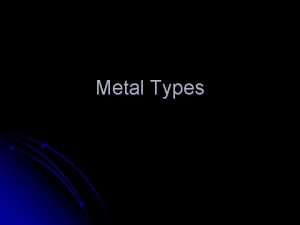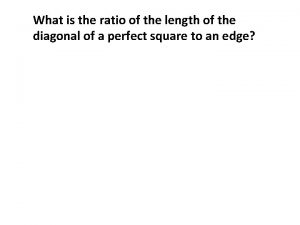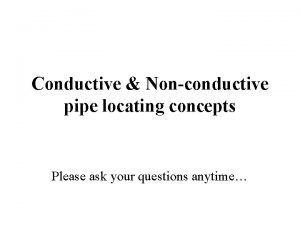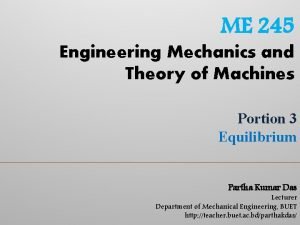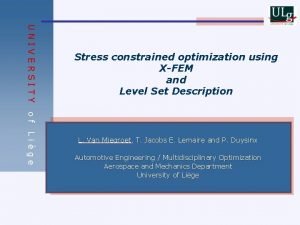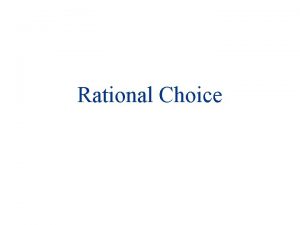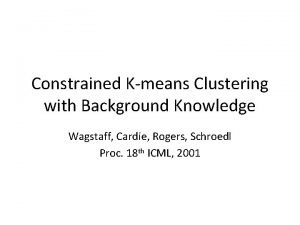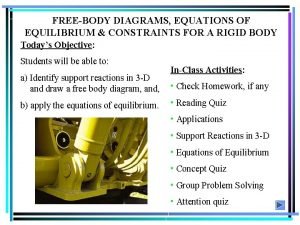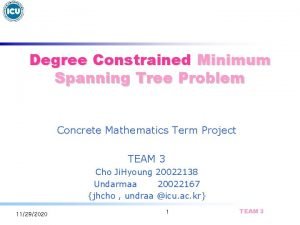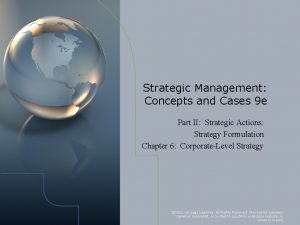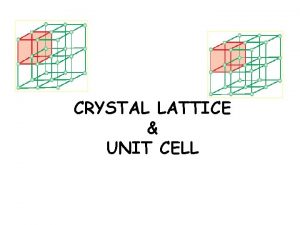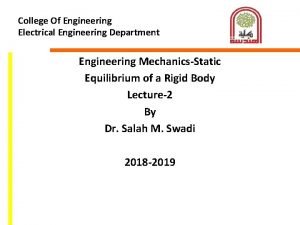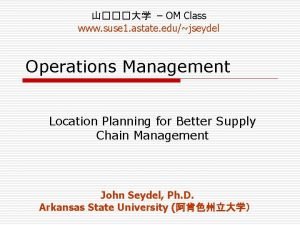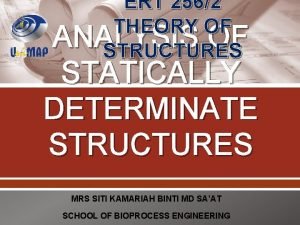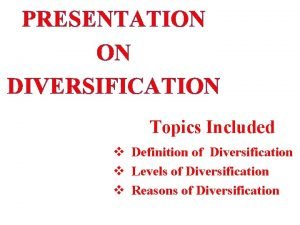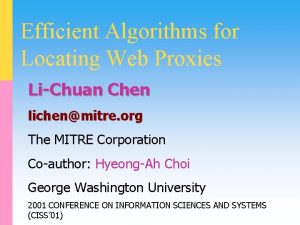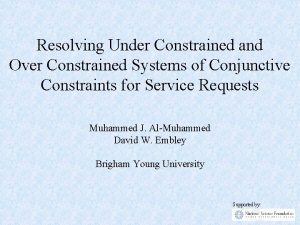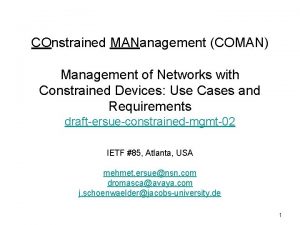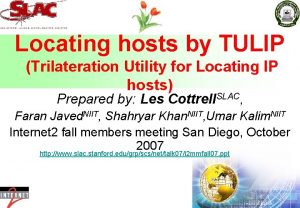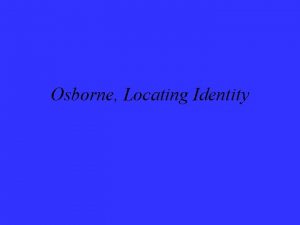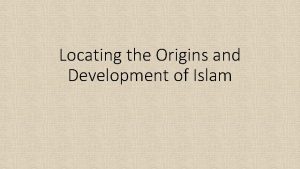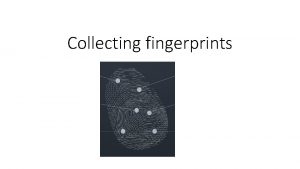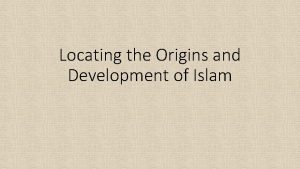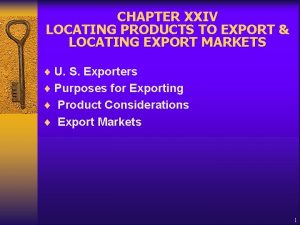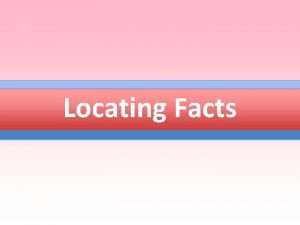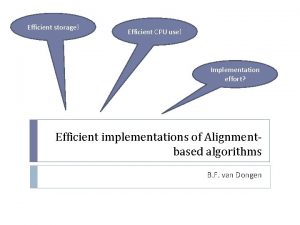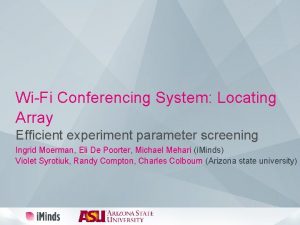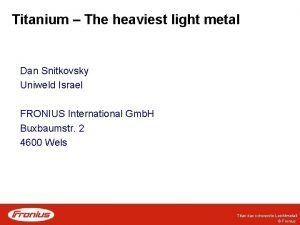Efficient Algorithms for Locating the Length Constrained Heaviest





![Applications to Biomolecular Sequence Analysis (II) • Annotating Multiple Sequence Alignments – [Stojanovic’ 99]: Applications to Biomolecular Sequence Analysis (II) • Annotating Multiple Sequence Alignments – [Stojanovic’ 99]:](https://slidetodoc.com/presentation_image/22ced054ef60a50b2cc5e4e8aedf5038/image-6.jpg)





















- Slides: 27

Efficient Algorithms for Locating the Length. Constrained Heaviest Segments, with Applications to Biomolecular Sequence Analysis Yaw-Ling Lin* Tao Jiang Kun-Mao Chao Dept CS & Info Mngmt, Providence Univ, Taiwan Dept CS & Engineering, UC Riverside, USA Dept CS & Info Engnr, Nat. Taiwan Univ, Taiwan * Yaw-Ling Lin, Providence, Taiwan

Outline • • • Introduction. Applications to Biomolecular Sequence Analysis. Maximum Sum Consecutive Subsequence. Maximum Average Consecutive Subsequence. Implementation and Preliminary Experiments Concluding Remarks Yaw-Ling Lin, Providence, Taiwan 2

Motivation: GC-rich Region Yaw-Ling Lin, Providence, Taiwan 3

Introduction • Two fundamental algorithms in searching for interesting regions in sequences: • Given a sequence of real numbers of length n and an upper bound U, find a consecutive subsequence of length at most U with the maximum sum --- an O(n)-time algorithm. • Given a sequence of real numbers of length n and a lower bound L, find a consecutive subsequence of length at least L with the maximum average. --- an O(n log L)-time algorithm. Yaw-Ling Lin, Providence, Taiwan 4

Applications to Biomolecular Sequence Analysis (I) • Locating GC-Rich Regions – Finding GC-rich regions: an important problem in gene recognition and comparative genomics. – Cp. G islands ( 200 ~ 1400 bp ) – [Huang’ 94]: O(n L)-time algorithm. • Post-Processing Sequence Alignments – Comparative analysis of human and mouse DNA: useful in gene prediction in human genome. – Mosaic effect: bad inner sequence. – Normalized local alignment. – Post-processing local aligned subsequences Yaw-Ling Lin, Providence, Taiwan 5
![Applications to Biomolecular Sequence Analysis II Annotating Multiple Sequence Alignments Stojanovic 99 Applications to Biomolecular Sequence Analysis (II) • Annotating Multiple Sequence Alignments – [Stojanovic’ 99]:](https://slidetodoc.com/presentation_image/22ced054ef60a50b2cc5e4e8aedf5038/image-6.jpg)
Applications to Biomolecular Sequence Analysis (II) • Annotating Multiple Sequence Alignments – [Stojanovic’ 99]: conserved regions in biomolecular sequences. – Numerical scores for columns of a multiple alignment; each column score shall be adjusted by subtracting an anchor value. • Ungapped Local Alignments with Length Constraints – Computing the length-constrained segment of each diagonal in the matrix with the largest sum (or average) of scores. – Applications in motif identification. Yaw-Ling Lin, Providence, Taiwan 6

Maximum Sum Consecutive Subsequence <-4, 1, -2, 3> is left-negative < 5, -3, 4, -1, 2, -6 > is not. <5> <-3, 4> <-1, 2> <-6> is minimal leftnegative partitioned. Yaw-Ling Lin, Providence, Taiwan 7

Minimal left-negative partition Yaw-Ling Lin, Providence, Taiwan 8

MLN-partition: linear time Yaw-Ling Lin, Providence, Taiwan 9

Max-Sum with LC Yaw-Ling Lin, Providence, Taiwan 10

Analysis of MSLC Yaw-Ling Lin, Providence, Taiwan 11

Max Average Subsequence <4, 2, 3, 8> is right-skew < 5, 3, 4, 1, 2, 6 > is not. <5> <3, 4> <1, 2, 6> is decreasing rightskew partitioned. Yaw-Ling Lin, Providence, Taiwan 12

Decreasing right-skiew partition Yaw-Ling Lin, Providence, Taiwan 13

DRS-partition: linear time Yaw-Ling Lin, Providence, Taiwan 14

Max-Avg-Seq with LC Yaw-Ling Lin, Providence, Taiwan 15

Locate good-partner Yaw-Ling Lin, Providence, Taiwan 16

Analysis of Max. Avg. Seq Yaw-Ling Lin, Providence, Taiwan 17

Implementation and Preliminary Experiments Yaw-Ling Lin, Providence, Taiwan 18

Implementation and Preliminary Experiments Yaw-Ling Lin, Providence, Taiwan 19

Conclusion • Find a max-sum subsequence of length at most U can be done in O(n)-time. • Find a max-avg subsequence of length at least L can be done in O(n log L)-time. Yaw-Ling Lin, Providence, Taiwan 20

Recent Progress • Lu (CMCT’ 2002): finding the max-avg subsequence of length at least L on binary (0, 1) sequences. O(n)-time. • Goldwasser, Kao, Lu (WABI’ 2002): finding the max-avg subsequence of length at least L and at most U on real sequences. O(n)-time • Tools: finding Cp. G islands using MAVG (joint work with Huang, X. , Jiang, T. and Chao, K. -M. ) http: //deepc 2. zool. iastate. edu/aat/mavg/cgdoc. html http: //deepc 2. zool. iastate. edu/aat/mavg/cg. html Yaw-Ling Lin, Providence, Taiwan 21

Goldwasser, Kao, Lu (WABI’ 2002)’s Linear-Time Algorithm Yaw-Ling Lin, Providence, Taiwan

A new important observation i j g(j) g(i) • i < j < g(j) < g(i) implies • density(i, g(i)) is no more than density(j, g(j)) Yaw-Ling Lin, Providence, Taiwan 23

i j g(j) Yaw-Ling Lin, Providence, Taiwan g(i) 24

Searching for all g(i) in linear time Yaw-Ling Lin, Providence, Taiwan 25

Some thoughts • Attacking new problems with new ideas. • Collaboration is important for bioinformatics – Communication – Work on what you are good at Yaw-Ling Lin, Providence, Taiwan 26

Future Research • Best k (nonintersecting) subsequences? • Normalized local alignment? • Measurement of goodness? Yaw-Ling Lin, Providence, Taiwan 27
 Constrained nodes and constrained networks
Constrained nodes and constrained networks Describe the scada transport over llns with map-t
Describe the scada transport over llns with map-t Andrea goldsmith wireless communications
Andrea goldsmith wireless communications Heaviest metal
Heaviest metal Largest naturally occurring element
Largest naturally occurring element Allocative efficiency vs productive efficiency
Allocative efficiency vs productive efficiency Productively efficient vs allocatively efficient
Productively efficient vs allocatively efficient Allocative efficiency vs productive efficiency
Allocative efficiency vs productive efficiency Productively efficient vs allocatively efficient
Productively efficient vs allocatively efficient Productively efficient vs allocatively efficient
Productively efficient vs allocatively efficient What is the ratio of the length of to the length of ?
What is the ratio of the length of to the length of ? Conductive locating
Conductive locating Meyb-245
Meyb-245 Constrained optimization
Constrained optimization Rational constrained choice
Rational constrained choice Constrained k means clustering with background knowledge
Constrained k means clustering with background knowledge Tower crane free body diagram
Tower crane free body diagram Degree constrained spanning tree
Degree constrained spanning tree What is related constrained diversification
What is related constrained diversification Covering tetrahedral voids
Covering tetrahedral voids Improperly constrained
Improperly constrained Locating places
Locating places Scheduling resources and costs
Scheduling resources and costs Champion cooling company is locating a warehouse
Champion cooling company is locating a warehouse Four ways of locating the ethical in you
Four ways of locating the ethical in you Improperly constrained
Improperly constrained Scheduling time-constrained projects focuses on resource
Scheduling time-constrained projects focuses on resource Corporate relatedness vs operational relatedness
Corporate relatedness vs operational relatedness



